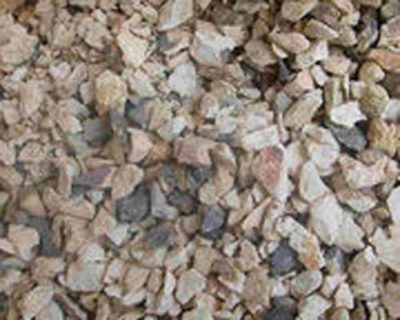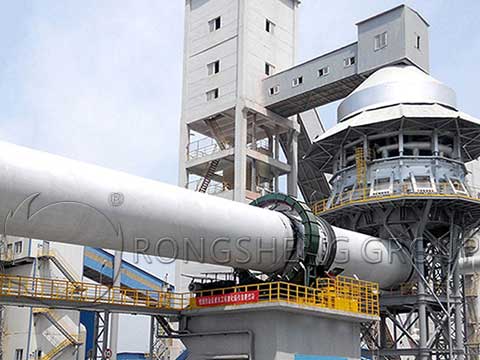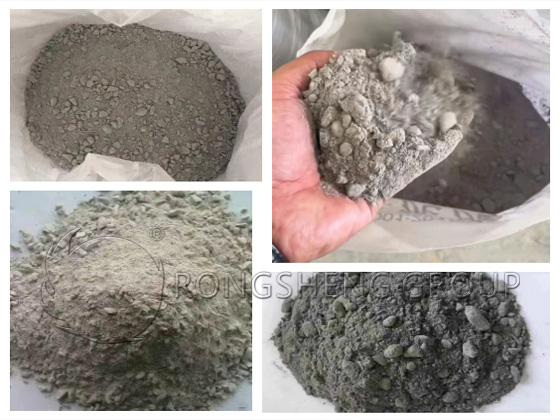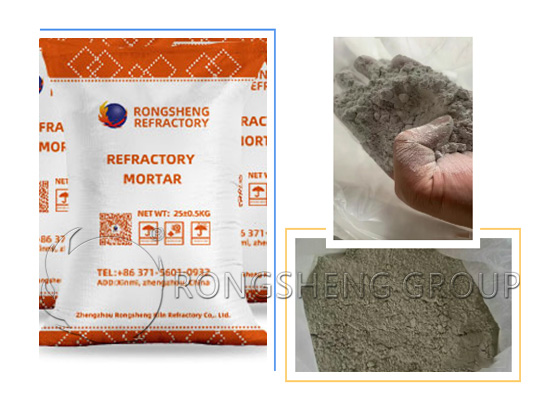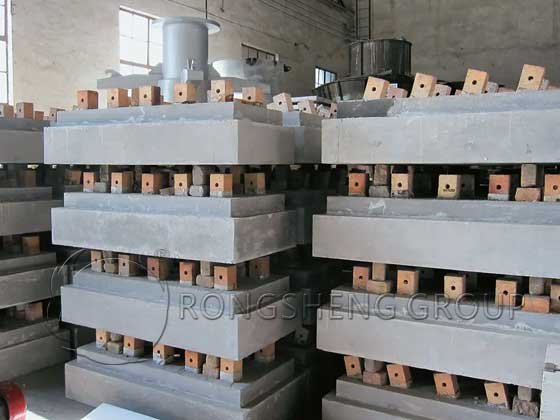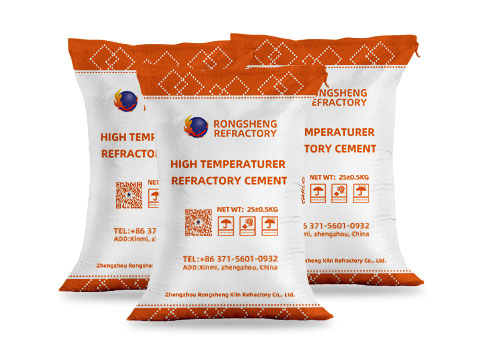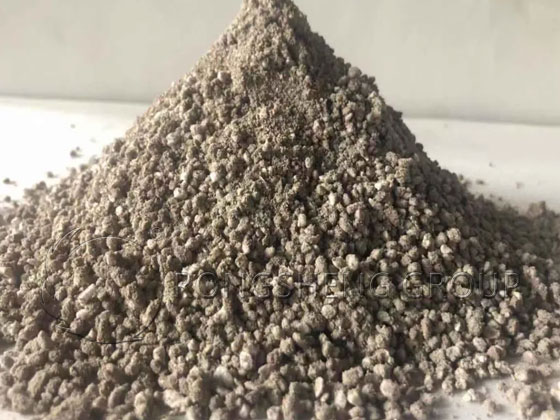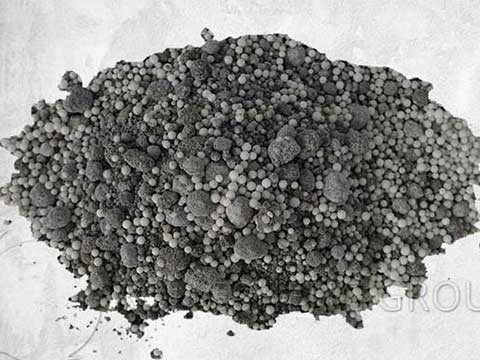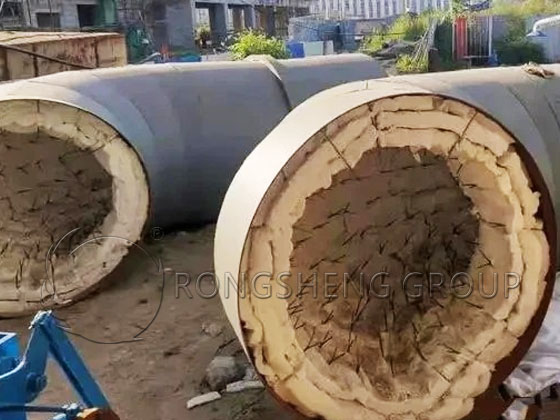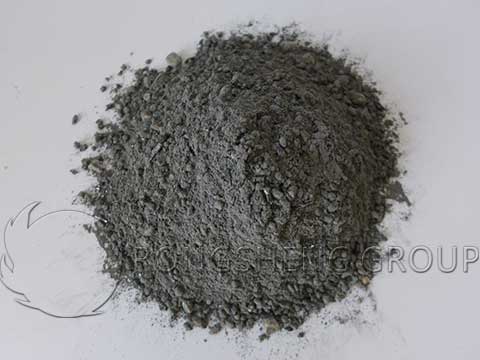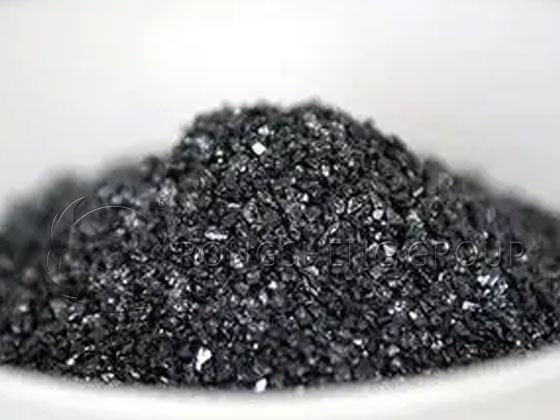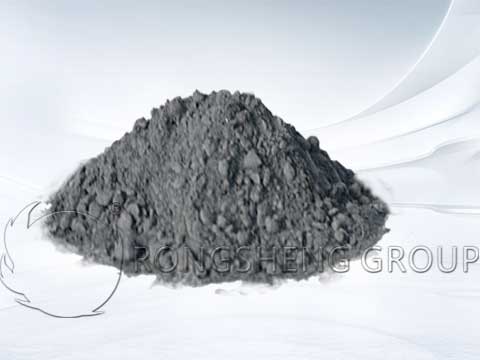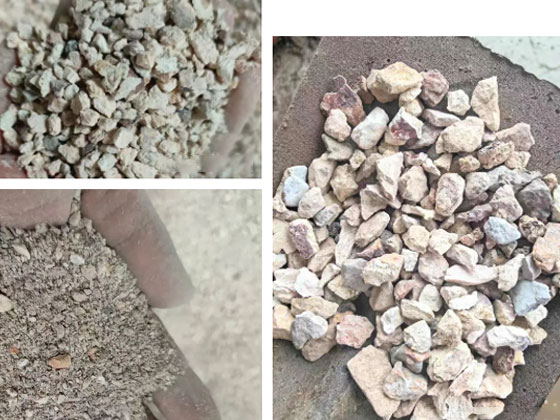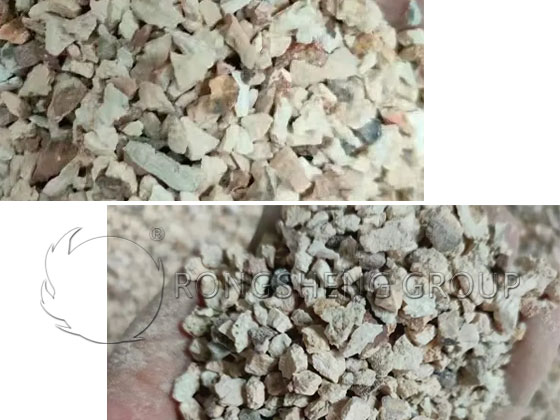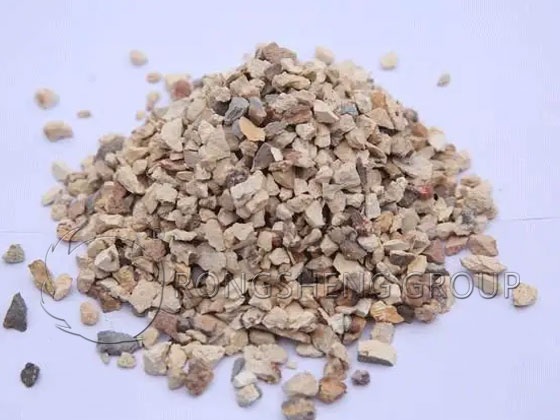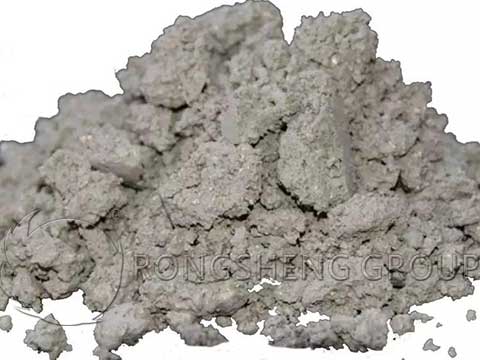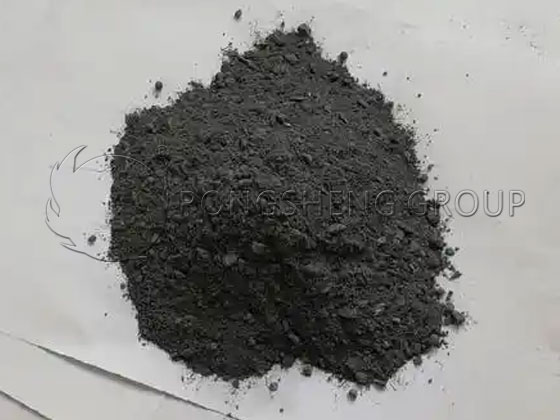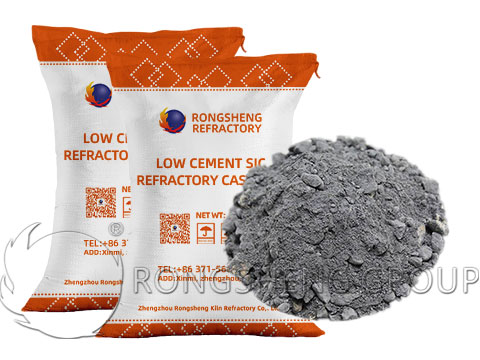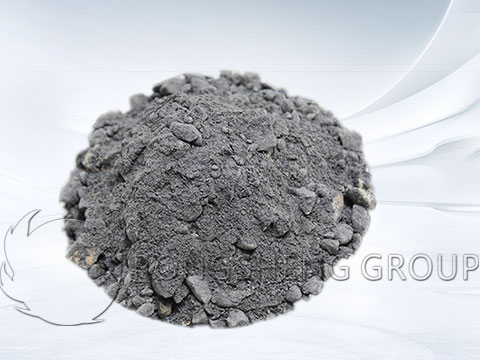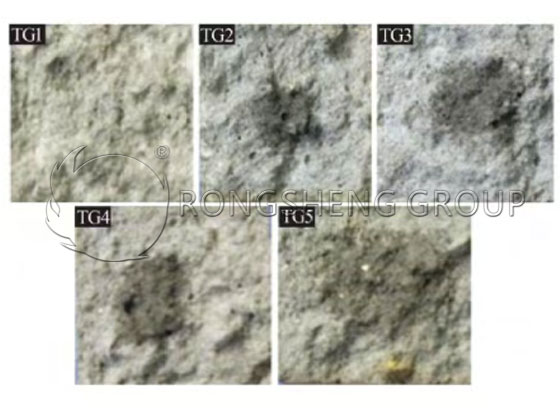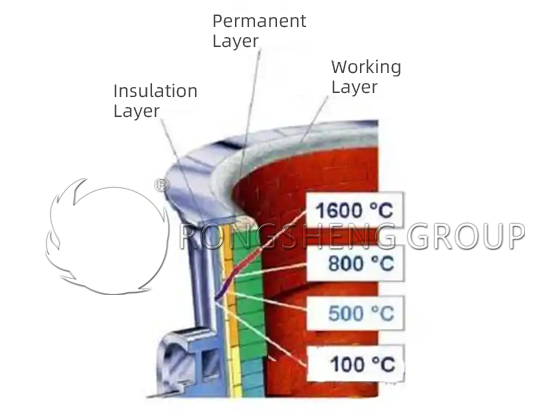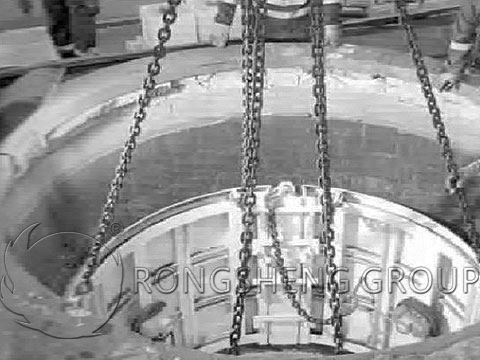Currently, the working layer of high-power and ultra-high-power electric furnaces is commonly constructed using magnesia dry ramming refractory materials. The working layer, made of refractory materials, comes into direct contact with molten steel and slag, bearing the high-temperature heat load and slag erosion. The erosion of molten steel, the mechanical impact of scrap steel, and the high-temperature oxidation and reduction processes within the furnace cause slag to penetrate the furnace floor, resulting in a thinning of the furnace floor. During discontinuous operation, the dicalcium silicate in the slag absorbs atmospheric moisture and disintegrates, reducing the material’s durability and service life.
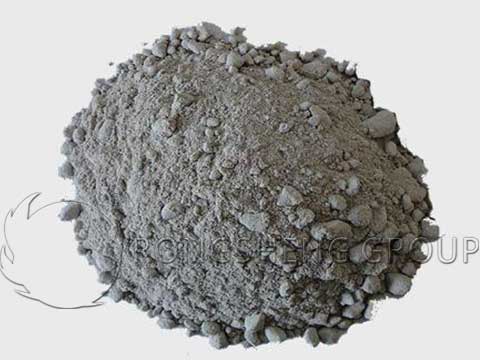
Common dry ramming refractory materials use high-iron, high-calcium synthetic magnesia and fused magnesia as aggregates, with the synthetic and fused magnesia powders used as fine powders, with a critical particle size of 5-6 mm. C2F (dicalcium ferrite) in the synthetic magnesia is used as a sintering aid, without the addition of any binders, and are produced using a multi-stage batching process. Through vigorous ramming, the resulting density is guaranteed, allowing it to sinter into a solid, integral structure at the appropriate temperature. Its service life is several times longer than that of previous knotting and bricklaying methods. The dry ramming mass used in medium frequency furnaces has higher quality requirements. Some scholars have studied the use of fused corundum, white corundum, plate-shaped corundum, and magnesia as granular materials, magnesia fine powder and corundum fine powder as powder, adding high-temperature sintering agents and boric acid as admixtures. The various raw materials are mixed evenly and the particle size distribution is adjusted to produce dry ramming mass.
Dry Ramming Material for Electric Furnace Bottom Construction
Before applying dry ramming refractory material for electric furnace bottoms, be sure to clean away any foreign matter such as permanent layer residue, dust, wire, and plastic sheeting. Calculate the knot size; the actual knot thickness is the desired knot thickness multiplied by 1.09. Prepare a sufficient amount of ramming material based on the required furnace slope and bottom dimensions. Upon receipt, inspect the ramming material for debris and moisture. Remove any debris and do not use damp material. Prepare ramming tools such as a rammer and jackhammer.
For specific construction steps, refer to the following plan:
After shoveling the material flat and laying it flat, tamp it down with your feet to remove any air. After tamping, insert a steel chisel into the material and shake it repeatedly, then tamp it down further with your feet. The ideal thickness for each layer of ramming refractory material is 150-200mm. Then, use a knotter to tamp the material three times in a spiral motion from the perimeter to the center.
The quality of the knot is usually checked by placing a 5mm diameter round steel bar on the ramming layer and pressing it down with a 10kg pressure to a depth of no more than 30mm. During on-site construction, you can forcefully insert the chisel, but the depth should not exceed 30mm.
The method for knotting the furnace slope is the same as for the furnace bottom: first tamp it down with your feet, then tamp it with a knotter. The maximum angle between the slope and the furnace bottom should not exceed 40°. This is to prevent rolling or collapse caused by excessive slopes.
In areas where molten steel is agitated and eroded, such as the taphole base bricks and the furnace door, ramming should be more vigorous and appropriate thickness may be added to maximize the service life of the refractory material in these damaged areas.
After ramming, a 5-10mm thick steel plate is placed on the ramming refractory material to prevent the scrap from damaging the furnace bottom or piercing the ramming material layer, which could cause steel leakage. If steelmaking cannot be carried out in time, a 100-200mm thick layer of lime is placed on the iron plate to prevent the ramming material from hydrating.
When knotting the ramming material, strict adherence to construction requirements is crucial to ensure its density. Failure to do so will result in significant shrinkage during use, leading to numerous cracks and spalling, shortening its lifespan. The first furnace smelting is crucial. During oxygen decarburization, the oxygen lance must not be inserted too deeply, as this can cause the ramming material to flip upwards and create large pits at the furnace bottom. During the first furnace smelting, a layer of lime can be applied to the furnace bottom. This not only prevents scrap steel from directly impacting the furnace bottom, but also prevents the ramming material from hydrating and prematurely forming slag.
Generally, dry ramming refractory material has a lifespan of over 300 furnaces. This can be extended to 500-600 furnaces through hot repair, with some commercially available products even exceeding 600 furnaces.
Repair of ramming material at the bottom of an electric furnace
After a certain period of use, the ramming refractory material at the bottom of an electric furnace will be damaged to varying degrees due to various reasons. Therefore, the lining should be repaired according to the damage of the lining.
- (1) Hot repair is carried out at regular intervals during smelting, but the bottom dynamics must be closely monitored after each batch of steel is discharged. If a pit with a depth greater than 150mm is found, it must be repaired.
- (2) Before repairing, use oxygen (immediately after the steel and slag are discharged) to blow the surface to be repaired to completely remove the residual steel and slag in the area.
- (3) Hoist the ramming material to the top of the area to be repaired and drop it down. Move the crane to distribute it reasonably.
- (4) Hoist iron blocks or other heavy objects and compact them.
- (5) It should be emphasized that if a large area of the furnace bottom or furnace slope is hot-repaired, in order to ensure the service life after the repair, shorten the number of repairs, and reduce the consumption of dry ramming refractory material per ton of steel, the first batch of steel after hot repair can be smelted in accordance with the “Operation Requirements for Smelting New Furnaces”.

